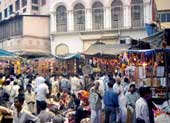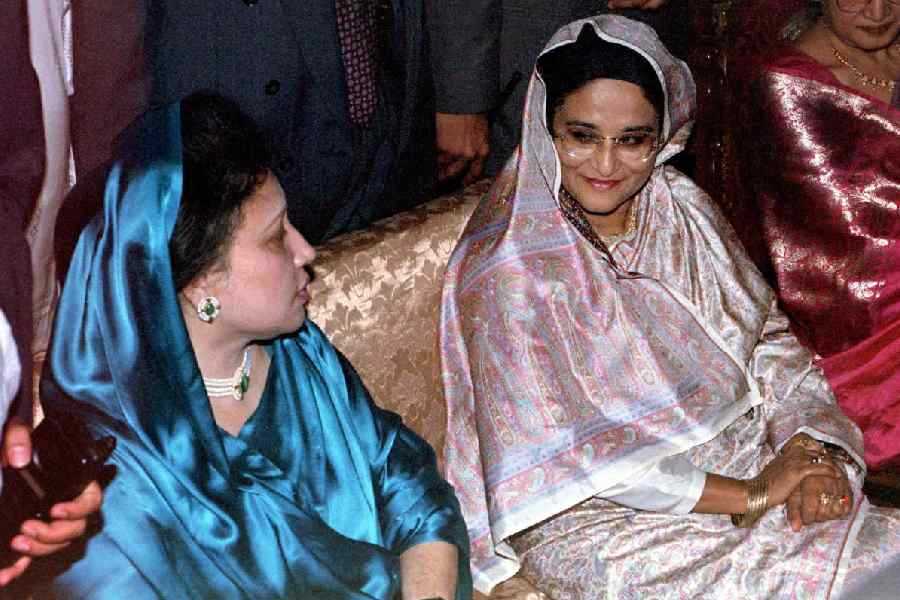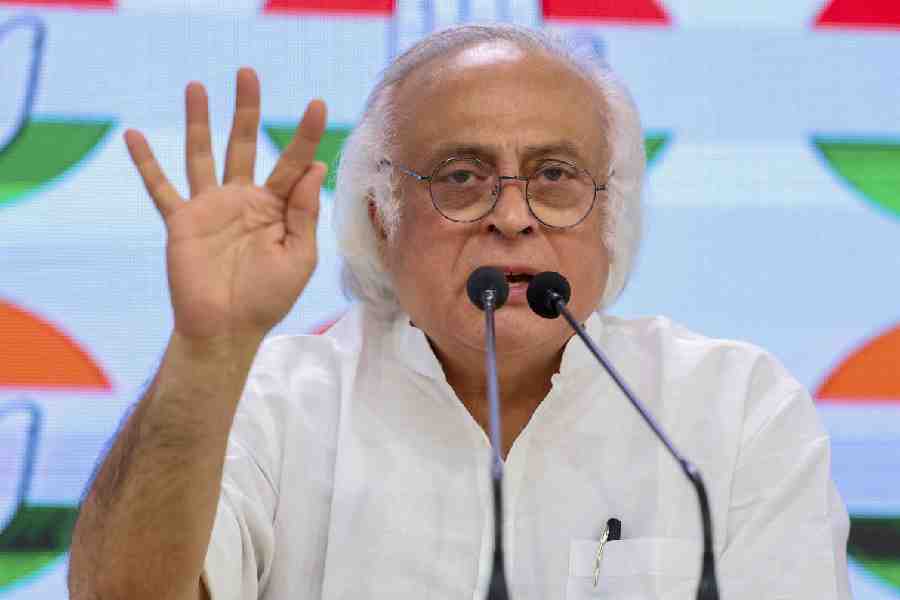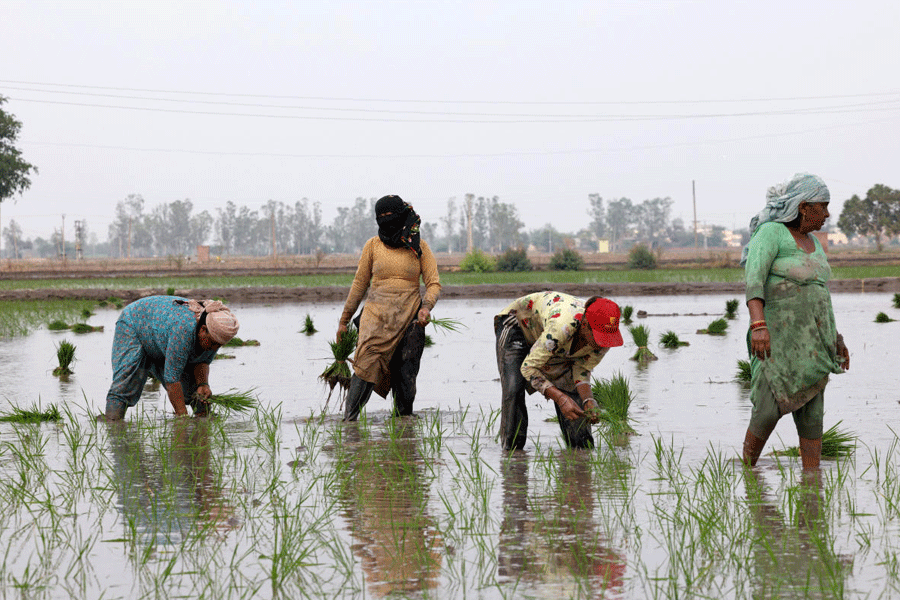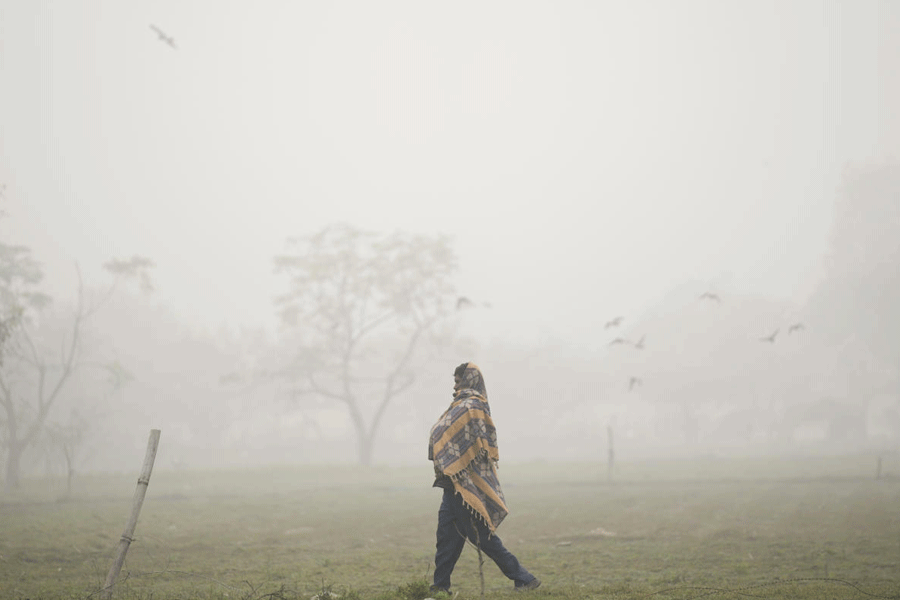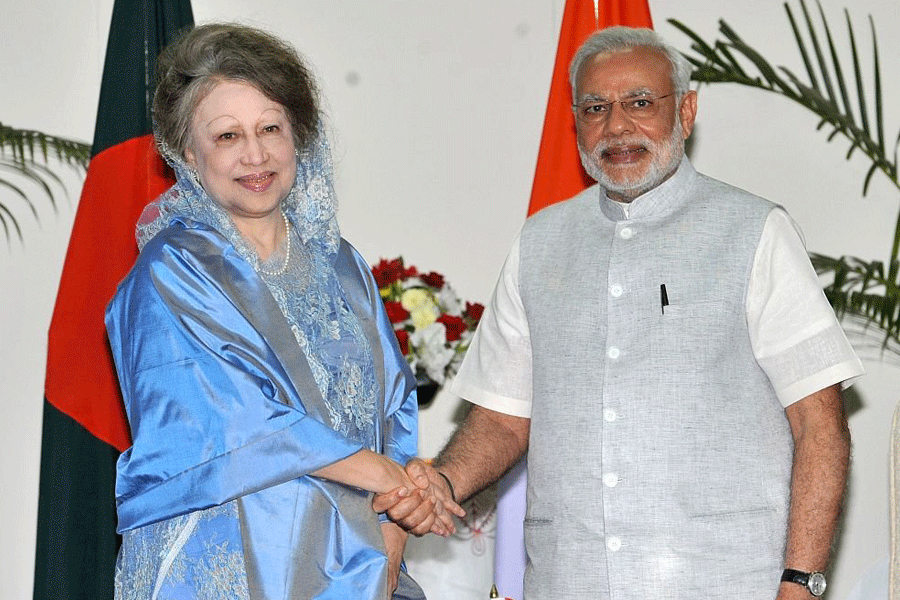 |
Before every Diwali, the Burrabazar bylanes are transformed into a magic mart. Devadeep Purohit and Reshmi Sengupta walk the puja samagri path
kalakar street. An otherwise spacious stretch connecting Kalikrishna Tagore Street and Mahatma Gandhi Road coils up into a narrow lane for a week leading up to the festival of lights. Every Diwali, for the past six decades, a stupefying spread of puja ingredients plugs this street and several other offshoots of Burrabazar. From idols to their dainty dresses, designer diyas to saffron-tinted laddus, every conceivable article can be scooped from this gala bazaar, the city’s largest assortment of puja paraphernalia.
As Diwali inches closer, colourful makeshift stalls start dotting the serpentine lanes of Burrabazar, with “special permission” from the police and the Calcutta Municipal Corporation. The count of the set-ups, small and large, easily runs up to 800 in the less-than two sq km in the prime land. The series of shops bang opposite the Jain temple, near Satyanarayan Park, flaunts ornately decked-up idols of Ganesha and Lakhsmi (or Lachhmi, if you want to strike the right chord in Burrabazar) — the brother-sister gods symbolising wealth and prosperity.
They are sold in pairs. And the buyer has a wide range to choose from as the bounteous deities come in Benarasi, Dakshini and Jagari styles, with the drape being the distinguishing feature. Prices are shifting, too, starting from Rs 25 a pair to Rs 10,000, and one has to haggle judiciously for the best bargain.
If there is a melting pot in Calcutta, it is this — the idol-sellers are mainly from the Khatik community of Bihar; the dresses for the deities are handled by the Sardars; the desserts, dominated by laddus and gulabjamuns, are spun out round the clock by settlers from the desert-land.
For the rest of the year, the Khatiks are small-time traders and vendors. Most have been part of this annual affair for some three generations now. Methulal Sohankar, a middle-aged fruit-seller from Banstala, has witnessed the Diwali dhamaka on this precise patch for more than 45 years. “Managing a foothold in the jostle will be difficult in the next few days. The entire area from Mahatma Gandhi Road up to the Burrabazar post office will be blocked by vendors,” says Methulal, who grabbed priceless space and spread his ware earlier this week. His paper-wrapped racks display some 500 pieces of idols range from a modest Rs 25 to Rs 250. He also offers a package of the 16 essential ingredients — from karpur to scriptures -- and the customary garlands, flowers, diyas, banana and mango leaves, and even stickers of gods.
Mahendra Sohankar, a dosa vendor in his mid-30s, has set up shop in an adjacent lane. “You will also get a Lachhmi-Ganesha pair for Rs 5,000 in my stall. The three-foot Lachhmi looks like a beautiful woman,” he says, gazing affectionately at the goddess. The idols are usually picked up from Kumartuli and Kalighat.
Hedged in by the stalls is a group of Sardarjis selling palm-sized dresses for the sibling gods. “The traditional resham and safed vastra have given way to the zari-trimmed ghagras, dhotis and dupattas. People go for trendy items these days, so we have started stocking them as well. But there are still some takers for the traditional stuff. The Diwali sale fetches us around Rs 4,000 to 5,000, which is good money,” says Sardar Puran Singh, vending dress materials for clay, silver and gold idols for some 62 years now. Sons Prabhat and Manoj, who are drivers otherwise, join him during this season. “Though similar markets have come up in Bhowanipore, Lake Town, Rajabazar and elsewhere, Burrabazar is still the biggest,” Manoj says.
From Kalakar Street, the sale spills over to the main thoroughfare. Here, vegetable vendor Sanjay Sharma squats at a corner of the kerb with an array of diyas. Apart from the conventional shapes, one can spot fancy diyas in gold and silver hues moulded like a starfish or branches jutting out of a tree.
Then, right out of the blue, some cops from the Burrabazar police station troop down for a raid; Sharma’s brisk business comes to a brief halt. “They (the cops) give us permission to set up stalls for just three days, but many prefer shopping early to avoid the last-minute rush. So, we start a little early, too,” admits Sharma, who would hate missing out on the chance to cash in on the festive fervour. Six days in this mart earn him a hefty sum of Rs 3,000.
Leave alone petty vendors, not even local shop-keepers can let go the prospect of making a quick buck in this season. At his small shop near Satyanarayan Park, Dilip Khaitan stocks the A-to-Z of goods needed for Marwari marriages through the year. But every Diwali, he switches to items related to the puja. Besides samagri like roli, moli and Lakshmi-Ganesh panna, his store is packed with decorative accessories priced between Rs 10 and Rs 500. “The fancy garlands and wall-hangings comprise over 60 per cent of my sales,” mentions the middle-aged trader.
Khaitan feels shops in Burrabazar have always been quick to respond to the changing tastes and preferences of the market — perhaps the reason why people still queue up here, despite obvious odds like lack of parking — often breathing — space. But a closer look reveals that’s only half the truth.
On the flip side, for one, is Kali Gudam. The 100-year-old weather-beaten sweetshop on the lane opposite the Burrabazar thana lane has stuck to its basics: laddu, jalebi, bundiya and bhujiya. “It’s true people want trendy foodstuff, but we have never felt the need to change. Our products are always in great demand,” says Suresh Sureka, an employee. Three sixty-five days a year, Kali Gudam remains open from 7 to 11 in the morning and 2 to 9 in the evening and the rule is not relaxed even during Diwali. And the queue must be seen to be believed.

